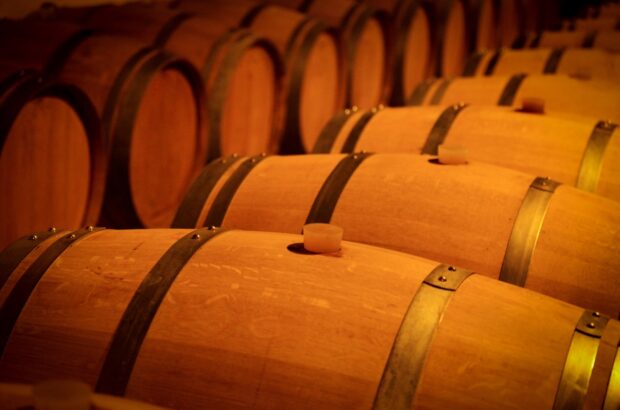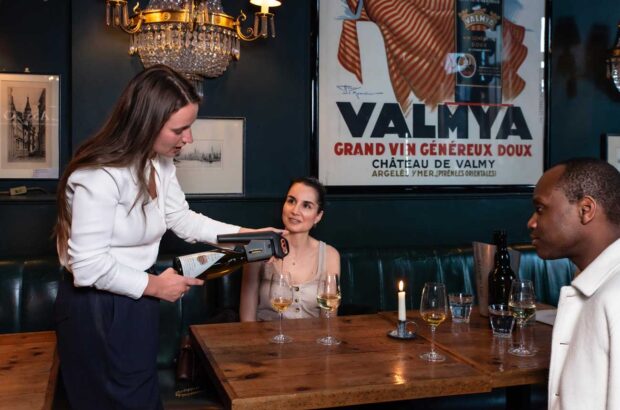Discover why De Bortoli, Noble One 1982 makes the Decanter wine hall of fame...
De Bortoli, Noble One 1982: The facts
Bottles produced 48,000
Composition 100% Semillon
Yield N/A
Alcohol 12.8%
Release price AUD$25 (about $81/£35 in
today’s money)
Price today £150 at The Wine Press
A legend because…
Although Australia has a long tradition of sweet wine production (mostly fortified), Noble One, first made in 1982 and labelled as ‘Sauternes’ until 1990, was a new departure. Placed as a ringer among a few dozen 1983 Sauternes in a blind tasting in 1987, I was one of the tasters who, while puzzled by the wine, acclaimed its quality. It was, I noted, ‘worryingly mature for a 1983 Sauternes’, but its plump, unctuous character gave it immediate appeal.
Looking back De Bortoli is a family winery, founded in 1928. In the early 1980s it was run by the late Deen De Bortoli. His son Darren had been enchanted by the 1975 Château Coutet he’d had drunk while a student at Adelaide’s Roseworthy College; moreover, Deen had already experimented with botrytis wines in the 1970s, though with little success. Their decision to embark on a significant production of a botrytis-affected Semillon did not meet with universal approval within the family, but they were vindicated.
The 1982 Noble One has gone on to win (on the Australian wine show circuit) more than 11 trophies and 46 gold medals. As the wine was re-entered into subsequent wine shows, it garnered 138 trophies and 425 golds. The De Bortolis have since made the wine every year except in washed-out 1989 and 2012. The vintage Preceding years in Riverina had been hit by drought, but in 1982 there was abundant rain, and growers were confronted with lots of botrytised fruit.
Initially abject at having to discard part of their crop, the growers were delighted when the De Bortolis offered to buy the best of it. This was something of a gamble on their part, as it was not immediately clear whether the mould was the noble botrytis cinerea or the less desirable brown rot. Fortunately it was mostly the former.
The terroir
The grapes came mostly from the De Bortoli vineyards in Griffith, an area within the Riverina region that has won a reputation for botrytis-affected wines, especially Semillon. Although the grapes were grown on differing soil types, there were some factors in common: moisture-retentive clay soils and regular morning dews that helped to provoke botrytis infection; while warm sunny days helped to concentrate and ripen the fruit. The use of flood irrigation also contributes to the necessary humidity for noble rot.
The wine
After a manual harvest, the juice is settled overnight, then clarified before being inoculated with yeasts to start fermentation, which can take up to three months. The 1982 was picked at a potential alcohol of more than 23%. Early vintages of what became Noble One were unoaked, but from 1990 the wine was aged mostly in tight-grained Seguin-Moreau barriques, although about 10% to 15% remains in tanks to preserve freshness.
The reaction
In 1986, Stephen Brook noted: ‘Lush, stylish botrytis nose. Plump, rounded, but very intense with delicious peachy fruit, and the botrytis bringing viscosity. Good length, but there’s a slight lack of acidity on the finish. Excellent.’
In 2009, Sarah Ahmed admired the wine: ‘The nose shows a spicy marmalade/orange-peel character with a barley sugar twist. Quite warm, with flavours of barley sugar, apricot and buttery bruléed apple tart. Good acidity still, with texture, tannin and a spicy marmalade finish.’
In the same year Australian wine writer Jeremy Oliver found it very evolved: ‘Now very mature with a complex, dusty and nutty bouquet suggestive of herbal and citrussy notes. It’s beginning to break down and dry out towards the finish but delivers charming intensity and elegance, finishing with savoury and vanilla aspects.’
More wine legends:

Wine Legend: Biondi Santi, Tenuta il Greppo 1975
Biondi Santi is a truly iconic estate: in the late 19th century it was the first in Montalcino...

Wine Legend: Château Montrose 1990
What makes Château Montrose 1990 a worthy wine legend...

Wine Legend: Dom Pérignon 1975
What makes Dom Pérignon 1975 a wine legend...?

Wine Legend: Bonneau du Martray, Corton-Charlemagne Grand Cru 1990
What makes Bonneau du Martray 1990 legendary...

Wine Legend: Taylor’s Vintage Port 1927, Douro, Portugal
What makes it a wine legend...?

Wine Legend: Hugel, Riesling Selection de Grains Nobles, Alsace, France 1976
What makes this wine legendary..?

Wine Legend: Joseph Phelps, Insignia 1997, Napa Valley, California
Joseph Phelps, Insignia 1997 is a legend because...

Wine Legend: La Mission Haut-Brion, Pessac-Léognan 1929
Why is La Mission Haut-Brion 1929 a wine legend...

Wine Legend: Klein Constantia, Vin de Constance 1986
Why Klein Constantia, Vin de Constance 1986 is a wine legend...

Wine Legend: Château Lafite-Rothschild 1959

Wine Legend: Cockburn’s Vintage Port 1947
What makes Cockburn’s Vintage Port 1947 a wine legend...?







